Click on any image for a slide show or scroll down to read the (illustrated) narrative.
In today’s blog I have combined and edited comments and observations from Scarlett Eastman with my own, and as always I am grateful to Scarlett for these, for her guiding skills (and for keeping the list as we go). Most of the comments below regarding comparative observations at Rosales is the work of Scarlett, and I thank her for it.
Dateline: Saturday 25 October. The weather was clear with some non-threatening white clouds and a brisk wind as we left Scarlett’s home in La Vega at about 07.00, and stayed so all day although it did become quite hot around midday. We headed first for the Laguna Rosales, on the road to Lolog; spent some hours in the woodland there; completed a circuit of the lagoon; and finally came back via Calle Gingens, where we stopped by several chacras and walked the mallin a while.
We had in fact visited Laguna Rosales almost exactly a year ago, and on this visit we kept fairly close to the same itinerary. We were struck on our earlier visit by how few waterfowl we observed on the lake and shoreland, and it was very gratifying to see the great ‘come-back’ since our last survey. Past surveys (in 1999, 2000 and 2001) had recorded large numbers of birds but last year was very disappointing.
Anyway, this year was much better than October 2013. We saw Brown-Hooded Gull nesting again in the reeds on the western tip of the lagoon, something not seen for the last ten years. Andean Ruddy Duck and Lake Duck were not yet up the millennial count of sixty-five to eighty individuals nesting but we were able to count some eighteen Lake Duck. These may have been nesting but we shall have to wait for a future visit to check for nests in the reeds.
We didn’t see any species of Grebes (Macá). Again, at the millennium a couple of pairs of Great Grebe (Macá Grande aka Huala, Podiceps major) and several pairs of White-tufted Grebe (Macá Común, Rollandia Rolland) were regularly observed. Scarlett had seen a pair of White-tufted Grebe last year on the eastern tip of the lagoon and as recently as last winter had seen a single bird; on this visit we saw none. Pied-billed Grebe (Macá Pico Grueso, Podylimbus podiceps) would also be regularly seen in the past but we saw none last year or this.
We did see Coots last year, both the White-winged coot (Gallareta Chica, Fulica leucoptera) as well as the Red-Gartered Coot (Gallareta Ligas Rojas, Fulica armillata) and this year the numbers seem to have slightly increased: we noted some half dozen Fulica leucoptera, but did not make a detailed survey. And we didn’t see any Black Cormorant (Biguá, Phalacrocorax brasilianus) at all.
Highlights of the day
We started the day with a Saffron Finch (Jilguero Dorado, Sicalis flaveola) which was on the feeder on Scarlett’s window; not the most common of birds but Scarlett always seems to have them around.
The highlight at the Laguna Rosales was probably the male Rufous-tailed Plantcutter (Rara, Phytotoma rara). We heard plenty of these but only saw the one.
We also heard lots of Black-throated Huet-Huet (Huet-Huet, Pterotochos tarnii) and Chucao Tapaculo (Chucao, Scelorchilus rubecula) but only caught a glimpse of the former scurrying through the undergrowth, his size and upturned tail helping to identify him. Sadly no photographs of these last two, but they are hard to see and even harder to photograph.
As stated above, the number of waterfowl on the lagoon was considerably up on last year. We saw large numbers of geese and ducks, and a fair few coots too.
Of course we saw many of the more common birds too: in particular the Black-faced Ibis (Bandurria,Theristicus melanopis) were out in force.
Laguna Rosales is a beautiful spot, and not just for birding. We saw countless rabbits, a few hares and were fortunate enough to see a coypo, swimming close to the bank. This is an indigenous animal, and the sighting was a first for me. I only had time for a rapid shot, somewhat obscured by the foliage, but it will serve as a register.
There were also many horses grazing on the marshland around the lake. Being a border town (with Chile) San Martín maintains a garrison and –given the mountainous terrain– horses are still a vital part of training and military operations, although it must be admitted they are also used to play polo on their own polo field at Laguna Rosales. The military seem to have a lot of horses; they also keep large numbers at the barracks on the Lolog road, near my house in Alihuén.
On the way home we drove along calles Gingens and Bello, stopping off at a couple of smallholdings to walk the premises. One of the farmers was an old friend of Scarlett’s, Pablo McKinley, who sat us down to cold beer, particularly welcome as the day had hotted up considerably. We spent a pleasant moment there, while he and Scarlett bemoaned the changing face of San Martín since they both came here many years ago. It is true the town is changing character and is not what it was, and for some the urge is strengthening to move further south.
Pablo had told us of a Great Egret on his land (which we were unable to find) but were lucky enough to get good views of a small group of land-based Black Vultures (Jote Cabeza Negra, Coragyps atratus), several colourful Austral Parakeets (Cachaña, Enicognathus ferrugineus) feeding in a Maitén tree and a very confident Hellmayr’s Pipit (Cachirla Pálida, Anthus hellmayri) who seemed happy enough to pose for us at close quarters all afternoon.
Teros were in full occupation of this land and dive-bombed us in the false belief that we were a threat to their territory. Wrens too were plentiful, and a pleasure to behold.
The pretty little Black-chinned Siskin (Cabecitanegra Austral, Carduelis barbata) was very much in evidence during the day and is a fitting image to close on.
Here is a complete list for the day, in alphabetical order. We recorded 33 species.
Bandurria (Theristicus melanopis) Black-faced Ibis
Cabecitanegra Austral (Carduelis barbata) Black-chinned Siskin
Cachaña (Enicognathus ferrugineus) Austral Parakeet ±8
Carpintero Pitío (Colaptes pitius) Chilean Flicker
Cauquén Común (Chloephaga picta) Upland Goose male and female ±10
Cauquén Real (Chloephaga poliocephala) Ashy-headed Goose ±20
Chimango (Milvago chimango) Chimango Caracara
Chingolo (Zonotrichia capensis) Rufous-collared Sparrow
Chucao (Scelorchilus rubecula) Chucao Tapaculo (heard only)
Codorniz de California – (Callipepla califórnica) California Quail
Comesebo patagónico (Phygilus patagonicus) Patagonian Sierra Finch
Diuca (Diuca diuca) Dicuca Finch
Diucón (Xolmis pyrope) Fire-eyed Diucon
Fio Fiofío Silbón (Elaenia Elaenia albiceps) White-crested Elaenia
Gallareta Chica (Fulica leucoptera) White-winged coot 6
Gallareta Ligas Rojas (Fulica armillata) Red-gartered Coot ±8
Gaviota Capucho (Larus maculipennis) Brown-hooded Gull ±50
Golondrina Patagónica (Tachycineta leucopyga) Chilean Swallow
Gorrión (Passer domesticus) House Sparrow
Huet-Huet (Pterotochos tarnii) Black-throated Huet-Huet
Jilguero Dorado (Sicalis flaveola) Saffron Finch
Loica (Sturnella loyca) Long-tailed Meadowlark
Pato Barcino (Anas flavirostris) Speckled Teal ±10
Pato Maicero (Anas geórgica) Yellow-billed Pintail 4
Pato Overo (Anas sibilatrix) Southern Wigeon ±8
Pato Zambullidor Chico (Oxyura vittata) Lake Duck ±18
Rara (Phytotoma rara) Rufous-tailed Plantcutter (male)
Ratona (Troglodytes aedon) House Wren
Ratona Aperdizada (Cistothorus platensis) Grass Wren
Tero (Vanellus chilensis) Southern lapwing
Tordo Patagónico (Curaeus curaeus) Austral Blackbird
Tordo Renegrido (Molothrus bonariensis) Shiny Cowbird
Zorzal (Turdus falcklandii) Austral Thrush
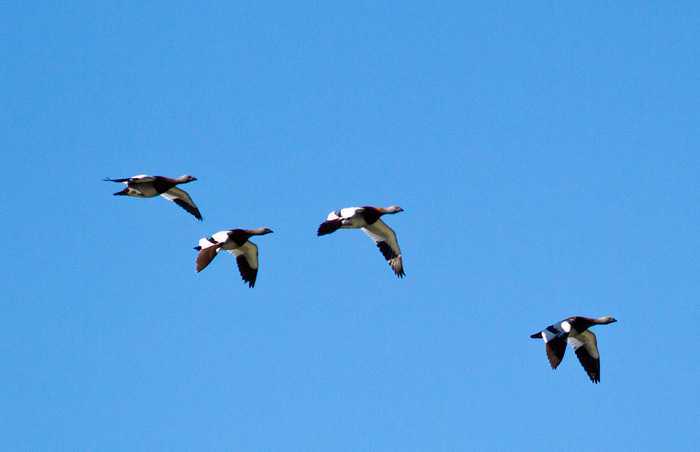
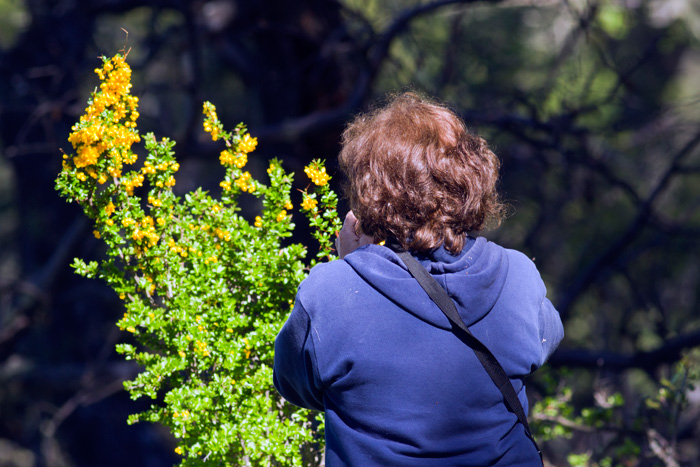
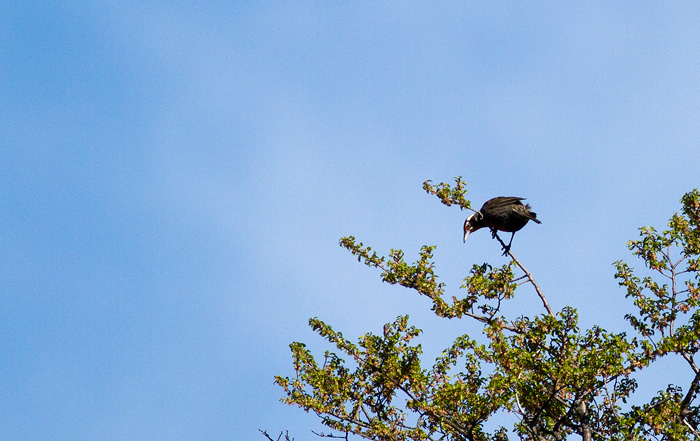
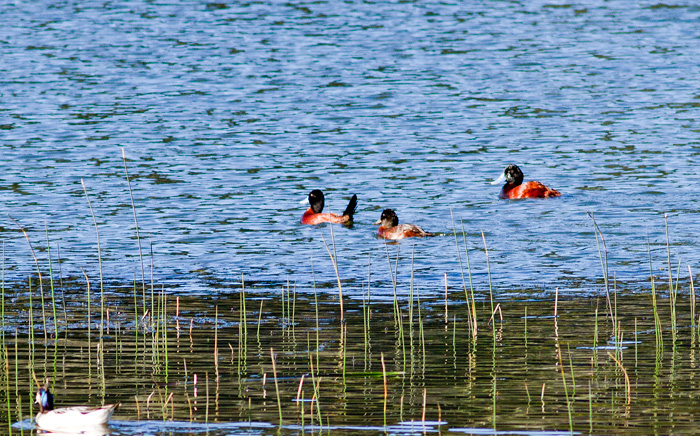
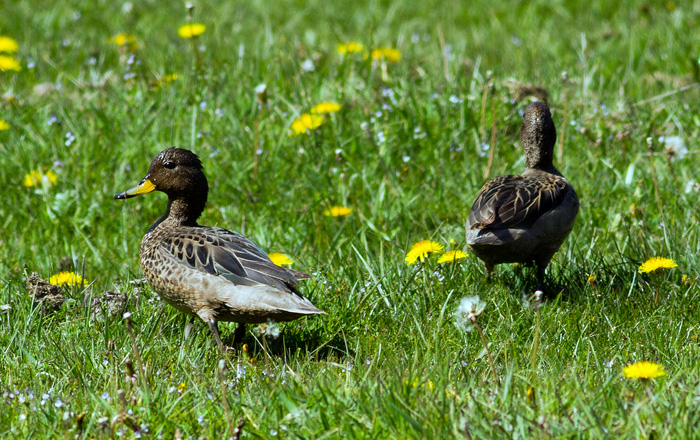
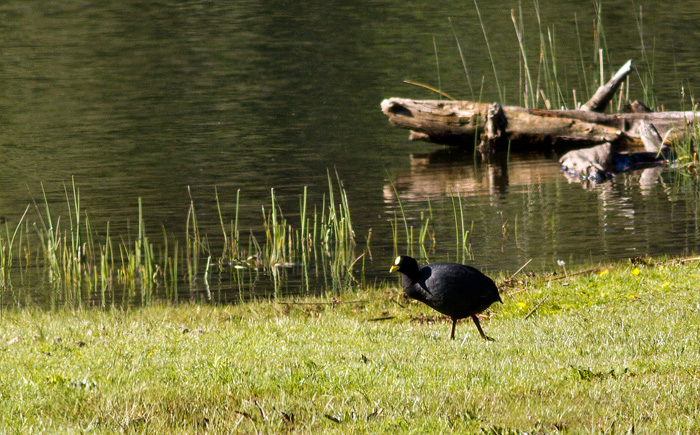
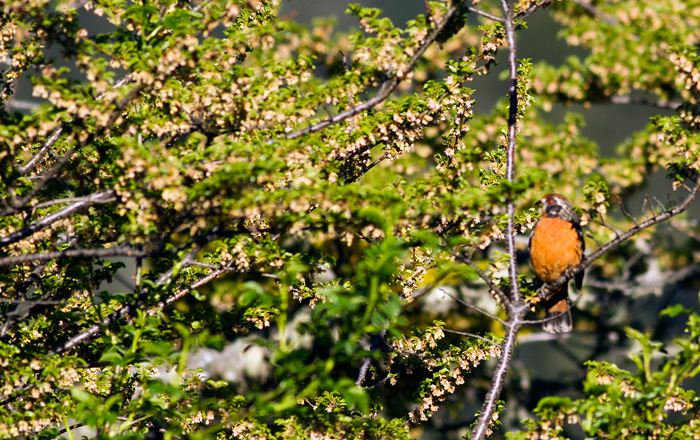
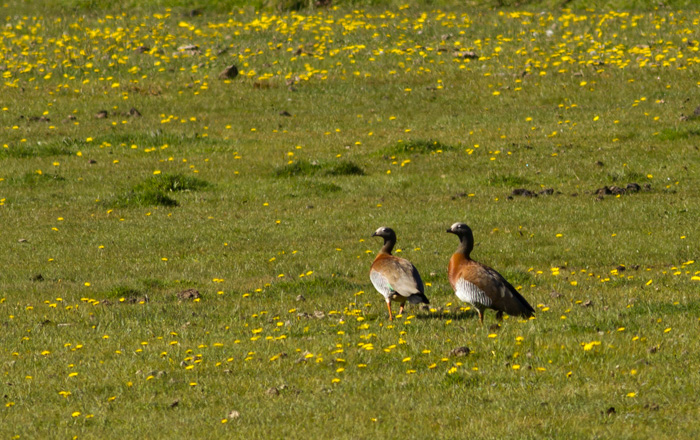
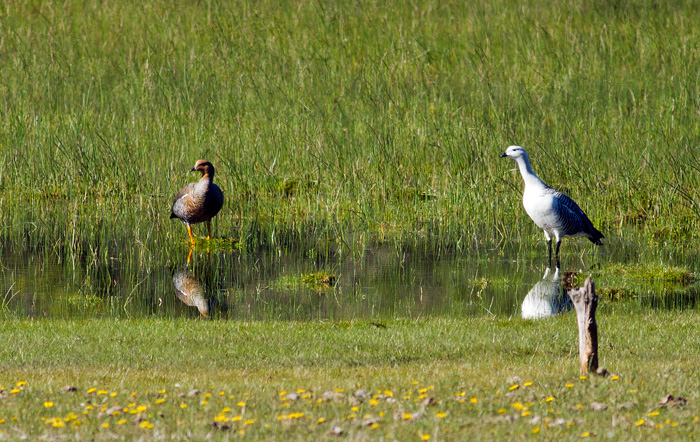
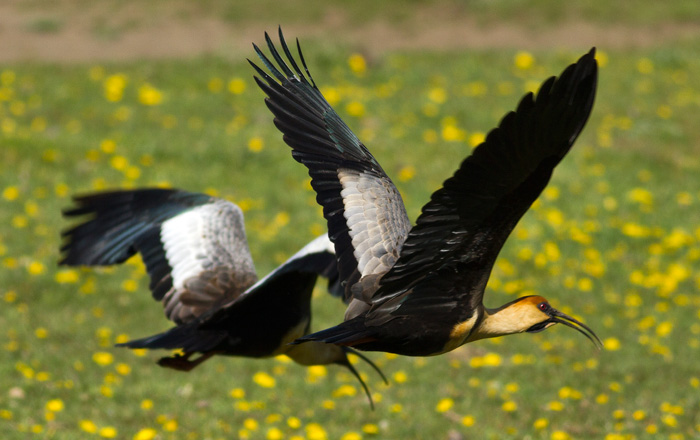
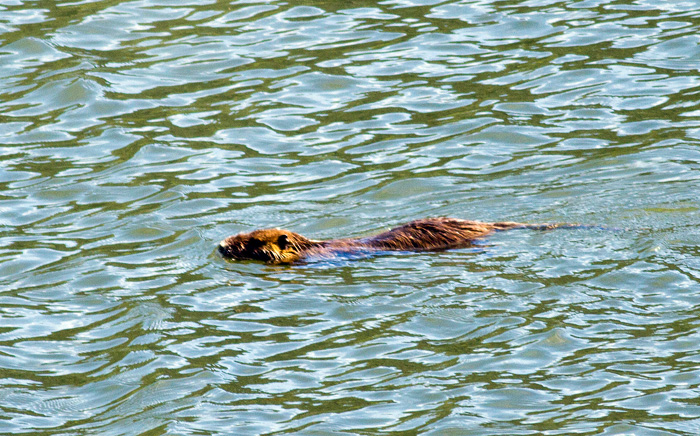
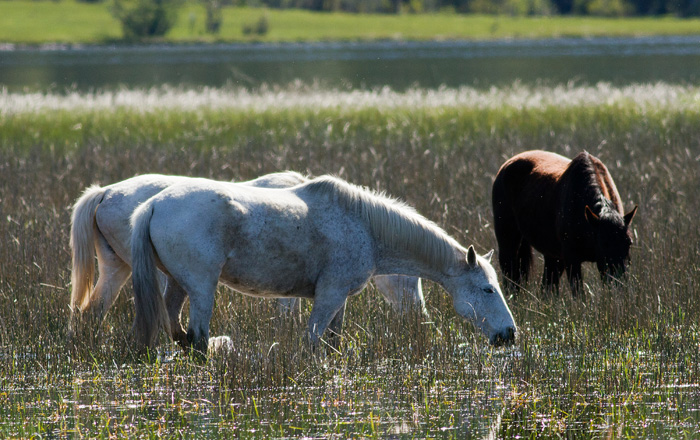
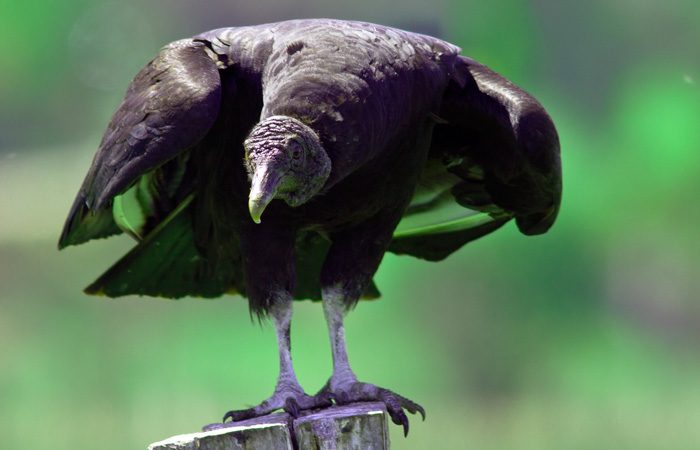
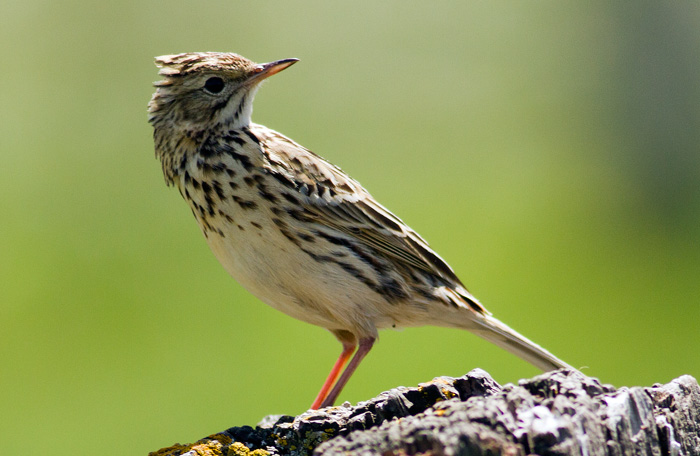
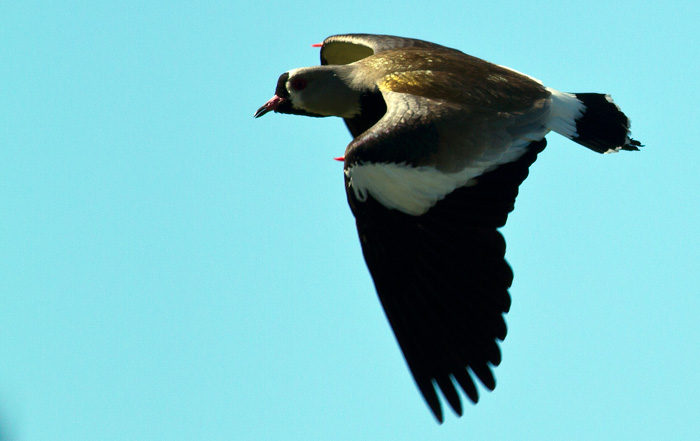
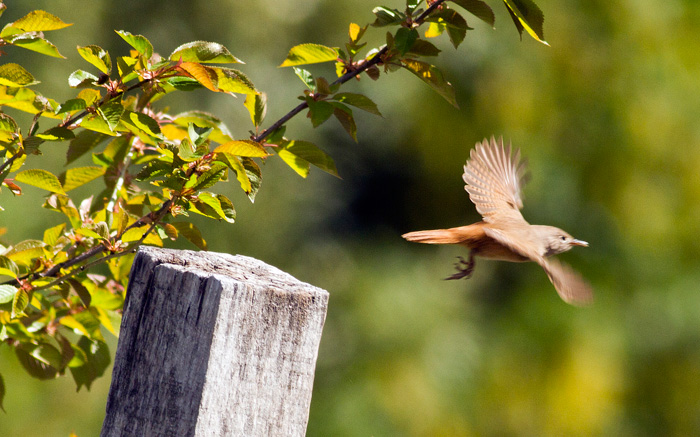
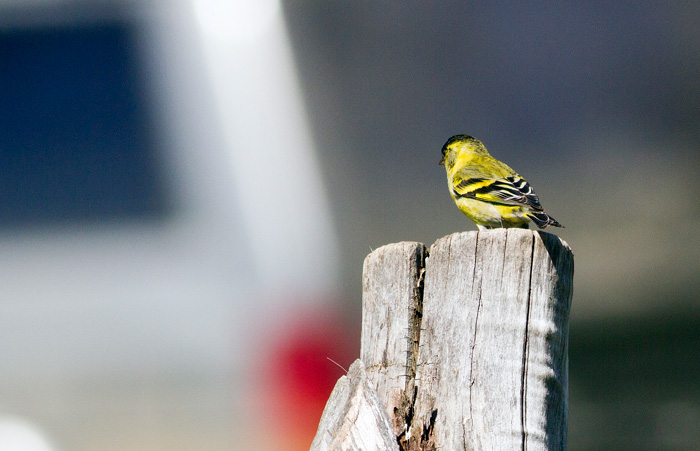
This is an excellent account of our visit to Laguna Rosales, giving a lot of good data about conditions in the lagoon in the past so now we can go on surveying it periodically to see how it develops or record any changes. I think that’s great. Thanks a lot and have a great experience going to the southern tip of the continent. Land’s End or the World’s End?
Land’s end, I think, although isn’t Ushuaia an island? The World’s end sounds a bit serious.